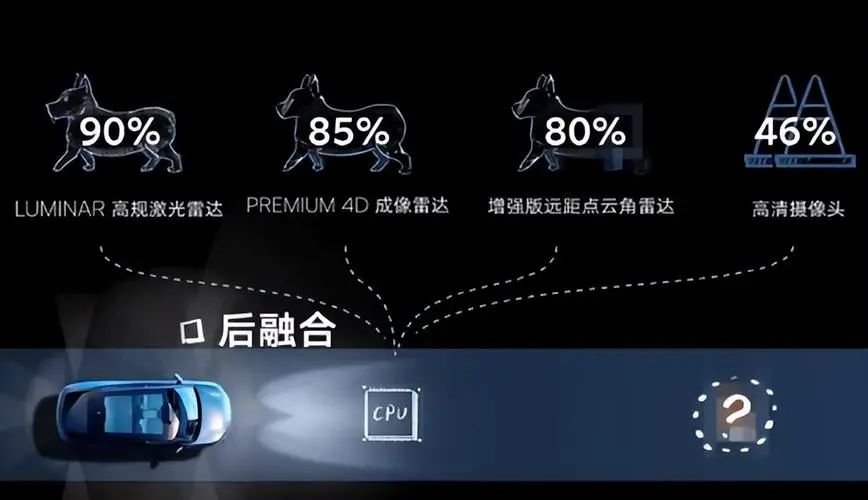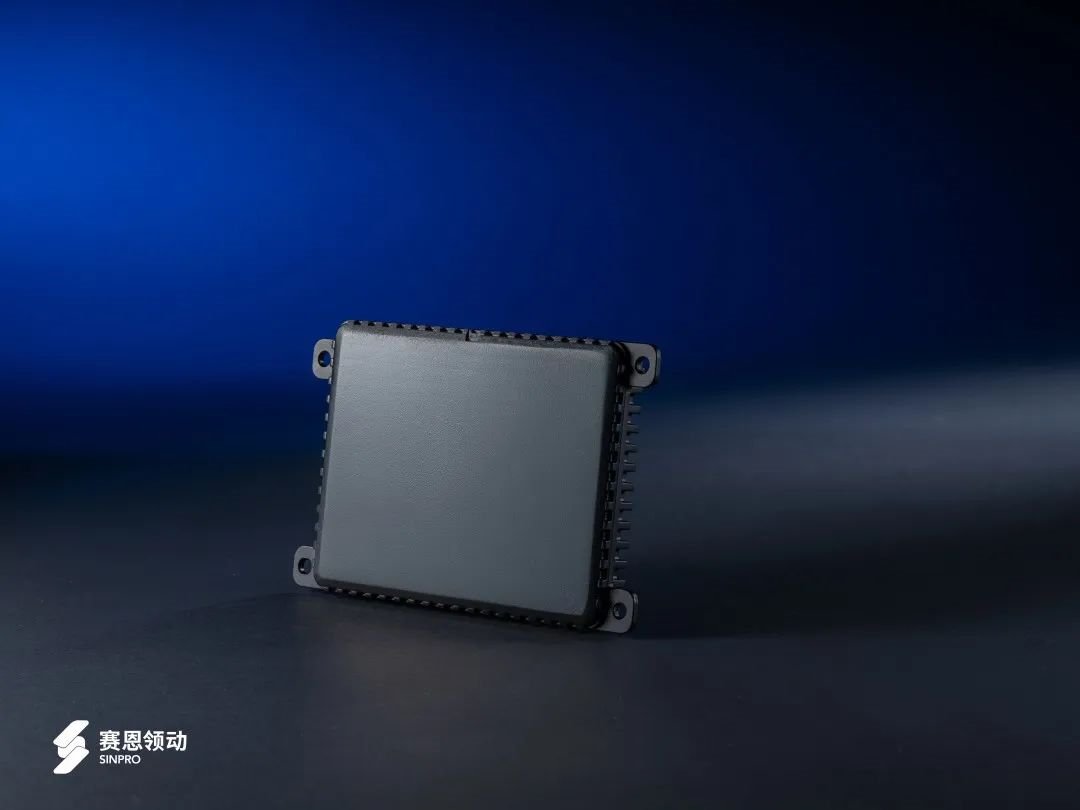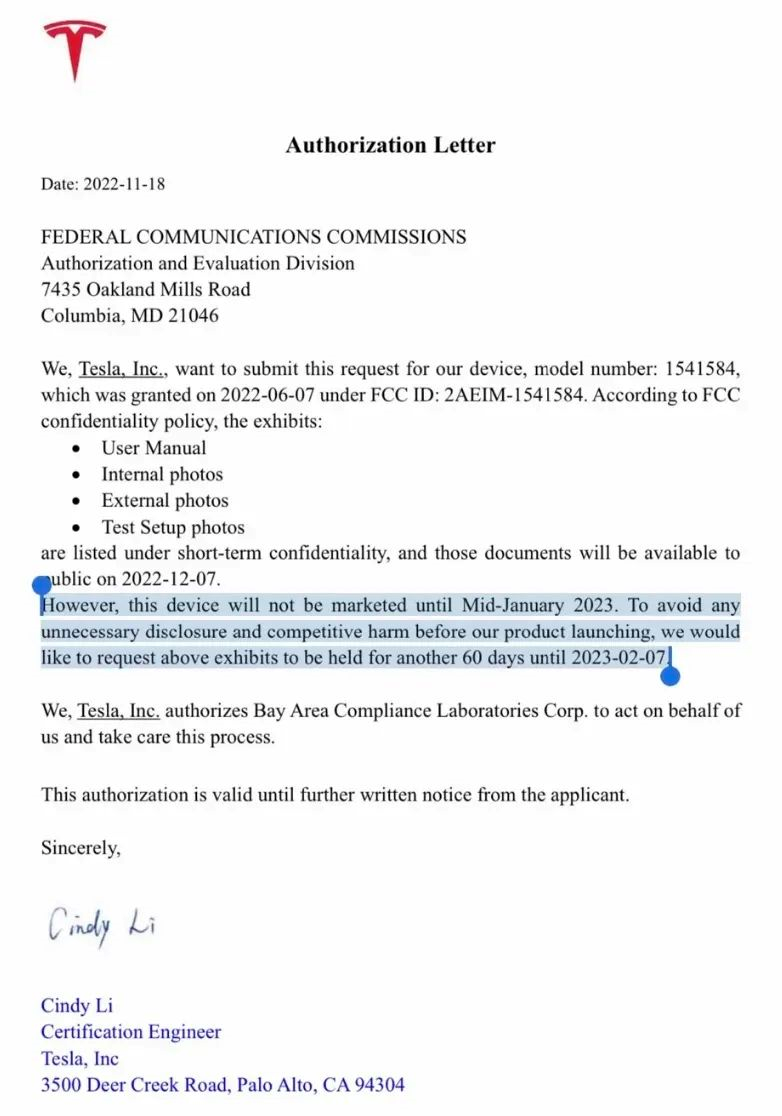Author: Michelin
18 million, that’s the number of millimeter-wave radars that will be equipped on new vehicles being mass-produced in China in 2022, a 30% increase compared to the previous year. Along with these millimeter-wave radars, there will be 221,000 LiDARs and tens of millions of cameras onboard.
In order to make intelligent driving a reality, automakers have been equipping their perception systems with more sensors at higher performance levels in the past year. However, long-tail issues such as ghost detection and group fog continue to plague intelligent driving perception under extreme weather conditions. The perceptual deficiencies of traditional radars and the high cost of LiDARs make the need for fresh forces in the perception system urgent, such as 4D imaging radars with higher resolution, better performance, and more controllable cost.
At the recent CES, Mobileye, a giant in the field of visual perception, announced that its 4D radar products will be mass-produced within two years. Mobileye is not the only company in the 4D imaging radar race, with the start-up company Sienvoling Dynamics officially launching its first self-developed vehicle-grade high-performance imaging radar SIR-4K.
-
Why is the 4D imaging radar field so popular?
-
What kind of changes can it bring to intelligent driving?
-
What opportunities does Sienvoling Dynamics have as a young start-up company?
With these questions in mind, GeekCar interviewed Dr. Li Xuyang, the founder of Sienvoling Dynamics. Let’s take a look at the 4D imaging radar and the story behind Sienvoling Dynamics as a new player in this field.

“The performance of imaging radar has not been fully explored yet.”
For those familiar with the radar field, the concept of 4D imaging radar has been around for nearly a decade. However, for most people in China, the first time they saw a 4D imaging radar on a car was probably on the FIFAN R7 last year.
 As the first mass-produced car equipped with imaging radar in China, the R7 of RisingAuto carries two Premium 4D imaging radars. At that time, SAIL was just established for less than a year and was in the stage of R&D and verification of 4D imaging radar intelligent hardware, sensor algorithms, and software.
As the first mass-produced car equipped with imaging radar in China, the R7 of RisingAuto carries two Premium 4D imaging radars. At that time, SAIL was just established for less than a year and was in the stage of R&D and verification of 4D imaging radar intelligent hardware, sensor algorithms, and software.

Seeing that the imaging radar of “big players” has already achieved mass production, is it too late for a start-up like SAIL to enter the game? Dr. Li Xuyang thinks that “the field of imaging radar is still a blue ocean”. In his perspective, it is not too late to enter the field of imaging radar in 2021, and it’s even a perfect timing.
“New product launch also requires timing and favorable geographical and social conditions. Pushing immature technology to the market at the wrong time may have a negative effect.” Currently, the timing and geographical and social conditions for imaging radar are just right.
On the one hand, the mature performance of traditional radar can no longer meet the sensing requirements. Even with the installation of lidar on cars, the redundancy problem in sensing cannot be solved, and the high price of lidar makes the industry more willing to try and accept innovative technologies with better performance and more controllable costs.
On the other hand, after nearly ten years of technological development and accumulation, imaging radar is mature enough to mine its own performance and find the best balance between high performance and low cost.
Dr. Li Xuyang, who was a technical manager for the fifth generation and pre-research sixth generation of imaging radar products at Bosch Germany and has been promoting the mass production of L4/5 Robotaxi multi-sensor systems for nearly seven years, describes the current imaging radar industry as follows: “The last generation of products has not really excavated the true performance of imaging radar.”
It is not easy to excavate the true performance of imaging radar and create a high-performance imaging radar. Every link, from system design, algorithm development and AI optimization to engineering mass production, is essential and has a long development cycle.

At the system design level, the previous generation of imaging radars commonly used a uniform array antenna layout. In order to achieve better performance, more complex and dense antenna layouts and waveform designs are needed, and how to solve the coupling problem between antennas and the need for angular measurement accuracy has become a new problem. To address this, Cenlingdong uses spatial and Doppler joint transform technology to solve the problem of long wave cycle caused by traditional TDMA (Time Division Multiple Access), while avoiding the speed ambiguity, phase consistency, and calibration issues brought by DDMA (Doppler Division Multiple Access). In other words, imaging radar can detect both distance and accuracy simultaneously.
After solving the breakthrough in RF technology, it is necessary to process the electromagnetic waves that target reflects back into stable and reliable point clouds for target tracking. To solve this problem, we need to have control over digital signal processing (DSP) technology and radar sensing algorithms. At the same time, combining the capabilities of AI with traditional radar algorithm capabilities allows imaging radar to present a clearer, cleaner, and more accurate point cloud.
Compared with traditional radar, high-resolution imaging radar will also amplify minor engineering errors during mass production and rely more on experience with ground mass production. To address this, Cenlingdong’s local team has years of experience with radar target tracking algorithms in mass production projects to solve these problems.
System design, algorithm optimization, AI technology, and engineering mass production experience are the core technologies of these linkages that allow Cenlingdong, as a new player, to have the confidence to truly tap the potential of imaging radar in a little over a year.
Solving Pain Points with “Fourth Dimension Perception”
In October 2022, Tesla removed the ultrasonic radar from their cars. Just as the pure visual camp was cheering, thinking that all perception needs could be solved with cameras, news emerged that Tesla is developing a new radar and will unveil it in early 2023. This new radar that can make Musk “slap himself” is the 4D imaging radar.
 In the current intelligent driving configuration, millimeter wave radar has almost become standard. However, for advanced intelligent driving, the shortcomings of traditional millimeter wave radar in detection accuracy and imaging capability are obviously unable to meet the requirements, and the high price of lidar and the reliability under special weather conditions are difficult to solve, making 4D imaging radar a dark horse that can provide the fourth type of perception for the intelligent driving system.
In the current intelligent driving configuration, millimeter wave radar has almost become standard. However, for advanced intelligent driving, the shortcomings of traditional millimeter wave radar in detection accuracy and imaging capability are obviously unable to meet the requirements, and the high price of lidar and the reliability under special weather conditions are difficult to solve, making 4D imaging radar a dark horse that can provide the fourth type of perception for the intelligent driving system.
If literally speaking, from traditional 3D millimeter wave radar to 4D imaging radar, it is based on the original data of speed, distance, and direction in 3 dimensions, adding the analysis of target height and providing 4 dimensions of data information.
However, the improvement from traditional 3D millimeter wave radar to 4D imaging radar is far more than just “3D+1D”, but an all-round improvement in sensitivity, resolution, detection distance, recognition of static obstacles, and point cloud generation.
Taking the first 4D imaging radar SIR-4K released by LI Vision as an example, this imaging radar uses the frequency band of 76-79GHz, which meets the performance requirements of L3-L5 intelligent driving and unmanned driving. Compared with traditional millimeter wave radar, the detection distance is doubled to 400 meters, and the detection of static obstacles can also reach more than 150 meters, which was previously unavailable with traditional millimeter wave radar.
In terms of detection accuracy, the horizontal directional angle resolution has been improved from 5º of traditional millimeter wave radar to 0.5º, and with the help of algorithms, it can accurately distinguish between dynamic and static targets; the vertical directional angle resolution can reach 1º.
The improvement in detection distance, detection accuracy, and the ability to detect static vehicles and pedestrians can allow the system to pre-perceive hidden targets at a long distance, such as potential hazards like pedestrians with ghost probes, which can be eliminated in advance.
In extreme weather conditions such as heavy rain, snow, and fog, when the detection capabilities of cameras and lidars are discounted, the principle of electromagnetic wave perception can still allow the imaging radar to maintain a certain degree of stability, solving the pain point of not being able to see far in extreme weather conditions.Except for the advantages of long detection distance, high detection accuracy, and classification of static obstacles, as well as coping with harsh weather conditions, SIR-4K can output 256 moving targets and 4096 point clouds without significantly increasing the hardware computing power by effectively using 192 channels. This number of point clouds is 16 times that of traditional 3D millimeter-wave radar, 4 times that of some already mass-produced imaging radars, and equivalent to the point cloud quality of a 64-line LiDAR, while the cost is only about one-fifth of the LiDAR.
Through the optimization of antenna layout, algorithms, AI target recognition, and classification, clean and effective point cloud output is provided for perception algorithms, which can better restore the 3D shape of the target while increasing the perception of the target’s Doppler velocity, achieving the extended target tracking at 4D level.
“Those who can do traditional radar may not necessarily be able to do imaging radar.” Dr. Li Xuyang described the 4D imaging radar in this way.
If traditional millimeter-wave radar is almost purely hardware, the 4D imaging radar takes into account both software and hardware. On the one hand, it improves the hard indicators such as detection distance and accuracy, and on the other hand, it continuously optimizes and iterates algorithms through data and AI, making the accuracy of target recognition and classification higher. Under the combination of software and hardware, the pain points in landing intelligent driving can be alleviated.
The current intelligent driving perception solutions in the market mainly have two choices: one is the purely visual route based on a high-pixel camera, and the other is the multi-sensor fusion route. Compared with these two routes, the 4D imaging radar has increased detection performance and point cloud quality by more than twice compared with traditional radar while costing only one-fifth of LiDAR. It also has the electromagnetic wave perception principle that complements LiDAR and optical perception of cameras, making 4D imaging radar an indispensable ally in the two perception routes and in the multi-sensor fusion route.
In the face of the perception needs of L2 ADAS systems, 4D imaging radar can replace traditional 3D millimeter-wave radar and improve the performance of the perception system.When facing the perception requirements of L3 and L4 advanced-level intelligent driving, the 4D imaging radar can, on the one hand, integrate with the cameras in pure vision solutions to help intelligent driving systems classify objects more accurately, thus providing sufficient system redundancy; on the other hand, it can merge with lidars to reduce dependence on multiple lidars by providing high-performance detection accuracy and point cloud quality from 4D imaging radar, thereby reducing the hardware cost of the perception system.
“2024 is the first year of large-scale deployment of imaging radar.”
Although there were already models equipped with imaging radar last year, Dr. Li Xuyang believes that 2024 is truly the first year in this regard.
Compared with the imaging radar installed on individual vehicle models today, we will be able to see 4D imaging radars in large-scale new models by 2024, which will improve the performance of the perception system and reduce the cost of intelligent driving. Perhaps only when the performance and cost are best balanced can advanced-level intelligent driving truly be deployed on passenger cars.
Finally
“Why did you choose to start a business in 4D imaging radar?” This is the last question in our interview.
Dr. Li Xuyang’s experience has been closely related to the radar field for over ten years, from his six years studying at the Karlsruhe Institute of Technology in Germany during his postgraduate and doctoral times to nearly seven years of work experience at Bosch in Germany. When sharing his past experiences with us, the memories that left the deepest impression on him were hand-deriving the Maxwell equations on the blackboard during his Ph.D. years and finding the optimal sensor fusion solution for thousands of long-tailed scenes when promoting L4/5 Robotaxi multi-sensor systems into production later on.
These experiences have both sensitized him to the future trends of the 4D imaging radar industry and allowed him to truly feel the weakness of domestic enterprises in the radar field over the past few years. “I simply want to return to China to develop 4D imaging radar for my own independent brand. If there is no suitable platform, I will wonder why I don’t do it myself?” Dr. Li Xuyang said.
This is almost a true portrayal of the intelligent vehicle field in recent years. Going back just a few years, millimeter-wave radars and even on-board sensor fields were almost entirely dominated by global Tier 1 companies. In recent years, we have seen more and more domestic startups like Ihnen LingDong trying to blaze a trail in the imaging radar field with innovative technologies and pushing intelligent driving forward with 4D imaging radar.# 这是一个标题
这是一段普通文本。
下面是一张图片:

我们也可以插入代码,如下:
console.log("Hello Markdown!");
function add(num1, num2) {
return num1 + num2;
}
以上就是一些基本的 Markdown 语法。
This article is a translation by ChatGPT of a Chinese report from 42HOW. If you have any questions about it, please email bd@42how.com.
